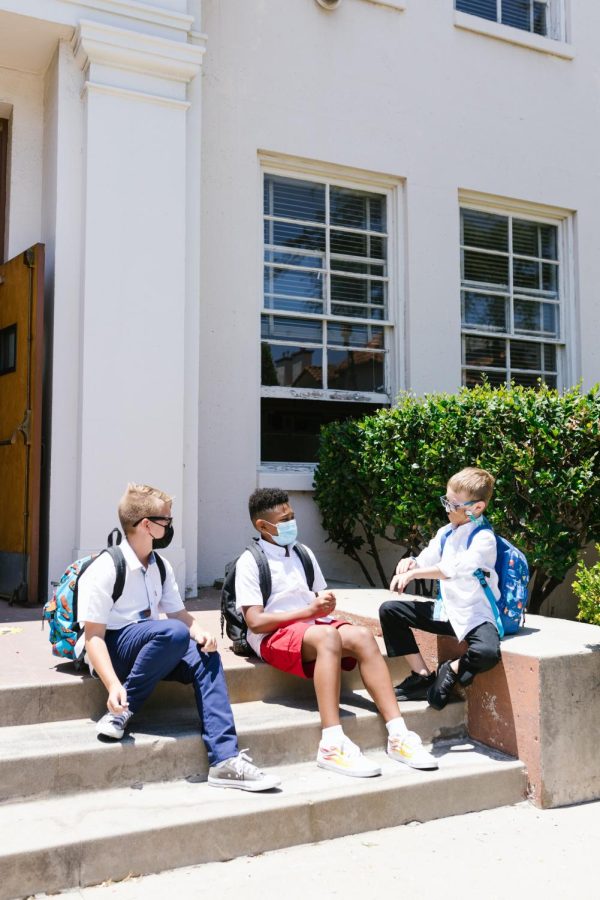A Beacon of Normalcy: California’s Mask Policy
April 20, 2022
*The opinions expressed within the content are solely the author’s and do not reflect the opinions and beliefs of the website or its affiliates.*
California has implemented a new policy; as of March 1st, masks are no longer required for unvaccinated individuals but are still strongly recommended in most indoor settings. Additionally, as of March 11th, masks are not required in schools and child care facilities but are, once again, strongly recommended. This shift in policy has brought some normalcy for the state’s public and, specifically, California students, by providing numerous individuals with the hope that the world will return to pre-pandemic life.
This change in California’s mask policy signals a beneficial shift towards normalcy for students, as it will return the academic experience of young individuals to an environment focused on developing communication skills and improving face-to-face interaction. According to a recent study conducted by Nour Mheidly, “The need for face masks, as an important protective measure to decrease the spread of the virus, had a huge toll on interpersonal communication. Facial expressions and gestures play a major role in facilitating interpersonal communication, comprehension, and the delivery of intended messages.” By hindering the ability of individuals to communicate properly, masks have served as a limiting factor in conversations and could have potentially detrimental effects down the line. Since students are still in a socially developmental stage, the new mask policy is crucial in finally allowing students to properly interact with their peers and teachers.
Moreover, the changes in the mask policy also provide benefits towards improving the comprehension of students in learning environments. Masks are a barrier to comprehension by deafening voices and eliminating lip-reading or facial expressions. According to professor of linguistics Valerie Fridland, “When face to face we instead integrate multi-sensory cues, including both auditory (hearing) and visual information. Visual cues are part of what we call the ‘speech chain,’ the connection between how a speaker produces speech and how a listener receives it.” This highlights the importance of face-to-face communication in improving comprehension in any setting. However, this point becomes increasingly important in a learning environment. If students are not able to understand information that is crucial to the lesson or curriculum due to certain policies, such limiting factors should be removed if doing so does not pose a significant health hazard.
Sophomore SangHyuk Im offered his input on the change in the mask policy and specifically how it has impacted the learning environment.
“Especially in my English class, being able to see my teacher’s face really helped me in understanding the content,” Im said. “For instance, I feel like I subconsciously started to understand my classmate’s and teacher’s analysis of the novel we are reading.”
Since some communicative cues are concealed by masks, the removal of them not only allows for easier communication in the classroom, but also reopens the educational doors towards improving these skills in young individuals.
The lift in the mask mandate policy now allows for an accelerated learning experience for students compared to that of the past couple of years. At UHS, the importance of the mask mandate can be seen at all levels, through easier interpersonal communication between students and better comprehension in various learning environments. This policy has finally ushered in some normalcy, allowing for a long-awaited return that many people have been looking forward to.





